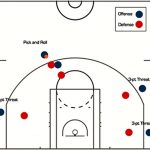Ever wondered what gets a player or manager ejected from a baseball game? Ejection rules in Major League Baseball are more complex than you might think. From unsportsmanlike conduct to using foreign substances, various actions can lead to an automatic ejection.
Interestingly, it’s not just players and managers who face the heave-ho. Umpires can also be ejected under certain circumstances. For example, Rule 116(e) covers situations where even officials might find themselves out of the game.
Understanding these rules can give you a deeper appreciation for the sport’s discipline and integrity. Moreover, arguing balls and strikes, excessively disputing decisions, and even inappropriate language can result in immediate ejection.
These rules ensure that the game maintains respect and order throughout.
Overview of Baseball Ejection Rules
Ejections in baseball serve to maintain discipline, integrity, and fair play within the sport. Umpires enforce them, and they have the authority to remove players, managers, or coaches from the game for various infractions.
Reasons for Ejection
Ejections in baseball occur due to various infractions, which maintain the game’s integrity and discipline. The most common reasons for ejection include:
- Profanity or Vulgar Insults: Directed at umpires or other game participants, this includes any statements considered obscene or unsporting.
- Physical Contact with Umpires: This comprises actions like bumping or improperly touching an umpire.
- Arguing Balls and Strikes: Persistent arguing over the umpire’s calls related to balls and strikes can lead to ejection.
- Fighting: Any form of fighting or physical altercation typically results in immediate ejection.
- Use of Foreign Substances: Possessing or using illegal substances can cause ejection from the game.
- Throwing Equipment: Intentionally throwing bats, balls, or other equipment, especially in a manner that could harm others, prompts ejection.
Authority Figures in Baseball
The enforcement of ejection rules falls under several key authority figures in baseball:
- Umpires: Primary enforcers of the rules and decisions on the field, umpires have the authority to eject players, managers, or coaches for infractions. They signal ejections by pointing to the dugout or waving their arm, often accompanied by verbal communication.
- Crew Chiefs: As senior umpires, crew chiefs hold additional responsibility for maintaining order and can confirm or overturn ejection decisions made by other umpires.
- Managers: Managers can be ejected for leaving the dugout to argue calls or protect their players. They often face ejection while attempting to minimize their players’ penalties.
Comparing Baseball Ejection Rules to Other Sports
In baseball, ejection rules aim to uphold sportsmanship, fair play, and safety. Let’s compare these rules to those in other sports:
Basketball
Basketball ejection rules address unsportsmanlike conduct. In the NBA, ejection occurs after two unsportsmanlike technical fouls, two type 1 flagrant fouls, a type 2 flagrant foul, or entering the stands. Ejected players must leave immediately to avoid further penalties.
In FIBA events, players are ejected after two technicals or unsportsmanlike fouls, or one disqualifying foul, and coaches are ejected after two technicals or a combination of three bench and coach technicals.
FIBA does not distinguish non-unsportsmanlike technical fouls, allowing for ejections due to consecutive delay-of-game violations.
American Football
American football ejections are less frequent than in other American sports, despite its physical nature. In the NFL, players are ejected for two unsportsmanlike conduct penalties, a rule introduced in 2016 to curb misconduct.
Automatic ejections were added for flagrant helmet-to-helmet contact starting in the 2018 season. Ejections can also result from striking, kicking, kneeing, unnecessary roughness, or any palpably unfair act, leading to a 15-yard penalty for the team, which impacts game strategy.
Soccer
In soccer, ejections follow for serious foul play, violent conduct, or deliberately handling the ball to prevent a goal. Red cards also apply for receiving two yellow cards in one game. An ejected player may not be replaced, compelling the team to play with reduced numbers.
Impact of Ejections on Game Outcomes
The impact of ejections on game outcomes in baseball can be significant, as it not only affects the immediate situation but also influences the dynamics of the entire game. Here are several ways in which ejections can impact game outcomes:
Effects on Team Dynamics
Ejections significantly impact team dynamics by affecting strategy and morale. The loss of a key player’s skill set can be crucial, especially in tight games.
For instance, if a starting pitcher is ejected early, the bullpen endures increased pressure due to the sudden change in workload. Coaches must make rapid adjustments, substituting potentially unprepared players, which affects overall performance.
Additionally, the mental and emotional strain on remaining team members can reduce focus and increase error rates.
Historical Instances of Game-Changing Ejections
Historical ejections have sometimes altered the course of important games.
During the 1977 World Series, Yankees manager Billy Martin’s ejection led to a strategic shift, while in a 1984 regular-season game, Reds manager Pete Rose’s ejection spurred a dramatic team comeback.
These instances show that ejections can either demoralize or energize teams, and high-profile ejections often attract media attention, influencing public perception and league disciplinary policies.
Evolution of Baseball Ejection Rules
The evolution of baseball ejection rules reflects the sport’s ongoing efforts to maintain order, fairness, and sportsmanship on the field. Here’s an overview of how these rules have evolved over time:
Changes Over the Decades
The rules for baseball ejections have evolved from the early days when umpires had wide discretion and few formal guidelines.
In the 1950s and 1960s, clearer rules led to more frequent ejections for actions like arguing with umpires or using profanity. The 1980s saw stricter penalties and a focus on maintaining discipline.
By the 2000s, standardized expectations and a well-defined process for ejections ensured consistency and accountability in Major League Baseball.
Influence of Technology on Rule Enforcement
Technology has significantly impacted the enforcement of ejection rules in baseball, particularly with the introduction of instant replay in 2008.
This tool helps umpires review contentious plays, reduces human error, and provides an objective basis for crucial calls, lowering the chances of disputes leading to ejections.
Advanced metrics and video analysis further aid teams and umpires in monitoring player behavior and making informed decisions.
These advancements contribute to a more transparent and consistent application of ejection rules, reflecting baseball’s commitment to fair play, discipline, and transparency as the rules evolve.
Frequently Asked Questions
Can an MLB umpire reverse an ejection?
No, once an MLB umpire has made an ejection, it cannot be reversed. However, umpires may seek additional information from fellow umpires before confirming the decision.
What do players do when they get ejected?
Ejected players must leave the playing area immediately and stay in their team’s dressing room or leave the building for the remainder of the game.
How many fouls lead to ejection in MLB?
In MLB, a player can be ejected for a single flagrant foul or other serious misconduct, such as arguing balls and strikes or unsportsmanlike behavior.
Can an ejected player return to the game?
No, once a player is ejected from a game, they cannot return to play, and attempting to do so will result in further penalties.
Can a player be ejected after a game has ended?
Yes, players can still face ejection penalties after a game ends, often resulting in fines or suspensions for particularly egregious behavior.
Conclusion
Understanding baseball ejection rules is crucial for appreciating the sport’s integrity and discipline. These rules have evolved significantly over the years, reflecting a commitment to fair play and transparency.
Umpires, crew chiefs, and managers play pivotal roles in enforcing these standards, ensuring the game remains competitive and just.
With advancements in technology like instant replay, the enforcement of these rules has become more precise, enhancing the overall experience for players and fans alike.
By staying informed about these regulations, you can better enjoy and respect the complexities of America’s pastime. It’s essential for both avid followers and newcomers to grasp the implications of ejection rules.
They not only preserve the sport’s fairness but also maintain order on the field, contributing to the game’s rich tradition.








Pat Bloom